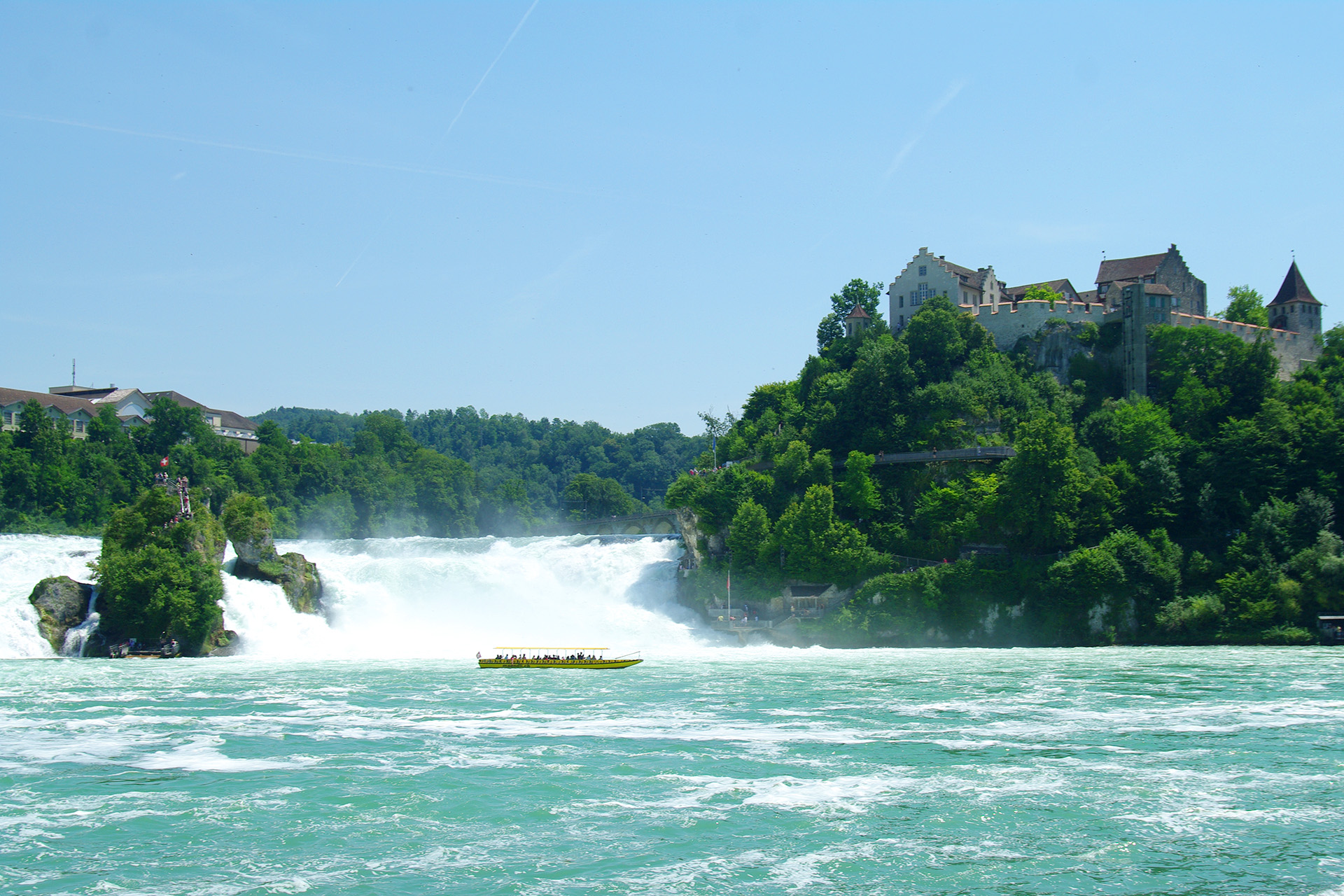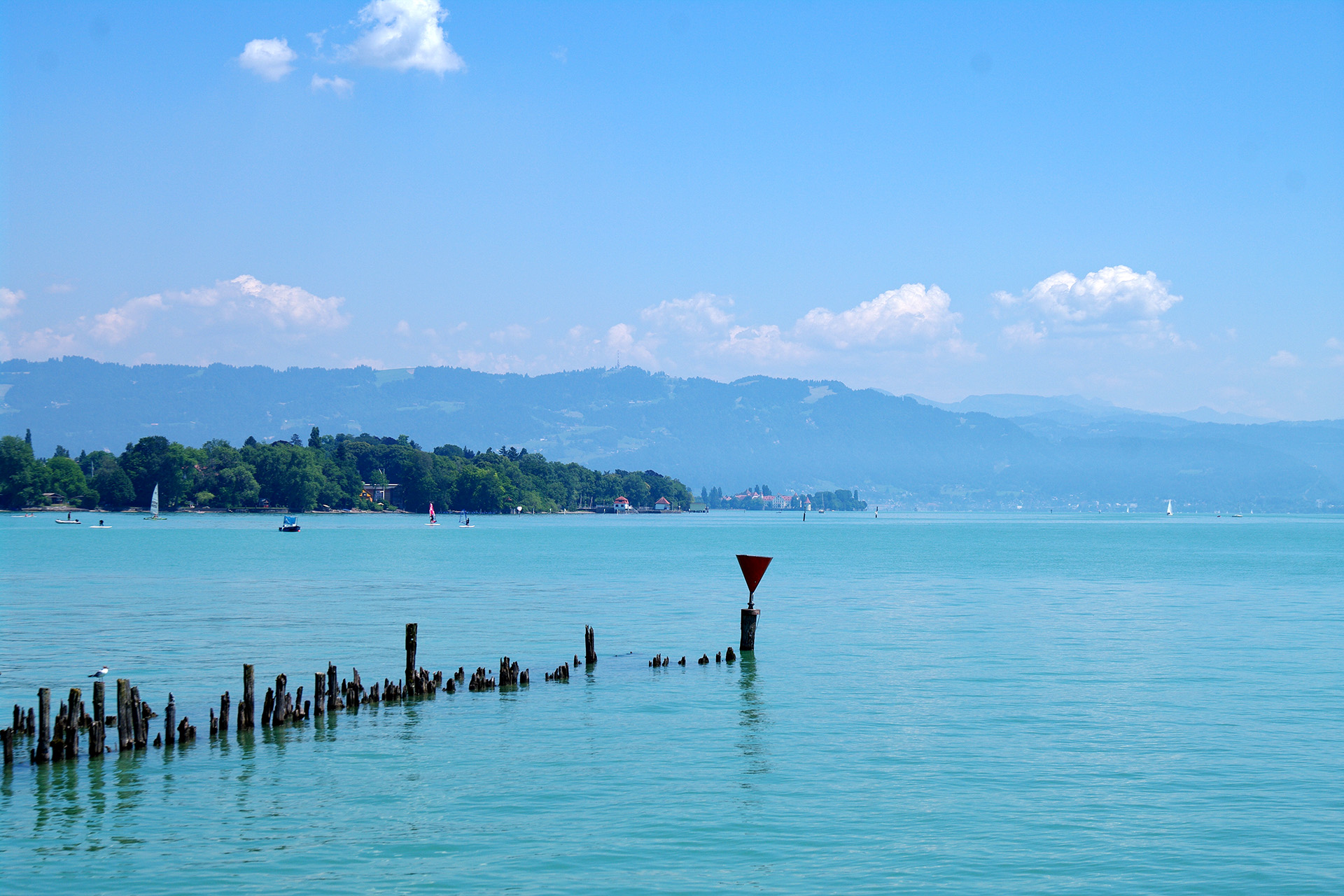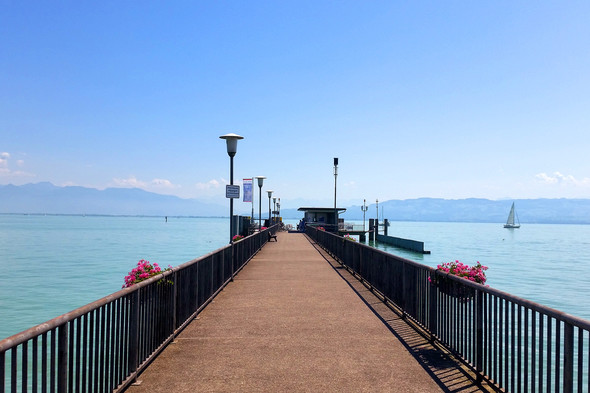On our trip we visited Austrian, German and Swiss wineries at the western end of lake Constance.
When we decided our next mission would be lake Constance, we began to collect information about the region’s wines. And we had our first surprise. The internet has relatively little information and those books in English which covered the region tended to mention the Pinot noir rosés. Well, the German rosé region is no longer about rosés at all, and not even about the Müller Thurgau grape variety created by Thurgau-born Dr. Hermann Müller at the end of the 1800s. But it appears they are correct in one aspect: Pinot noir. Most of the producers we visited think the variety does extremely well in the region and serious wines can be created from it.
The next problem was making contact. Practically no-one replied to the first emails. Finally – after one month of unsuccessful letter writing – we set off on our journey, knowing that just one winery in Germany was expecting us. Thus the reason the regions of Meersburg and Singen were left out of this trip. On our arrival we tried again. We phoned numerous places but, for example, we found that we couldn’t visit the Swiss wineries even though, according to their websites, they have fixed opening times. Not even if we went there in person, the winery was open and a group was tasting inside. We weren’t able to join.
But eventually we did manage to get inside one Austrian and two German wineries, and admire one Swiss from the outside – though we had driven for several hours to taste their wine. We are not claiming that everyone will have the same experience, but we certainly recommend serious preparation, in advance, whilst accepting that even this may not be enough for a successful wine tour!
Well, enough of the chat, it wasn’t so bad so let the article continue about that instead!
The area around the lake is full of incredibly interesting sights: stunning historic towns, beautiful buildings, vast mountains and hillsides covered with vines. The Swiss and Austrian area is higher and rockier, often with snow covering the upper reaches of the hills in summer too. This is nothing to be surprised at however since the Alps are one of the most important mountain ranges in Europe. And they are certainly the best known. The slopes above the northern lake shore in Germany are gentler. This is a key grape and mainly fruit-growing area with such gems on the lakeside as Meersburg and Lindau. The lake is fed by the water of the river Rhine. Indeed, one of the main tourist sights is the Rhine itself as the river overcomes the difference in height at the huge waterfalls at Schaffhausen, Switzerland. Konstanz and Mainau are must sees for those visiting the western part!

A short vineyard geography:
The hills on the German side are the remnants of glacial activity that can still be seen today if we look across from the mountains on the other side. These hills are the moraine mounds of clays deposited by the glacier. Broadly speaking the soil in areas closer to the lake are looser and stonier while those further away are more compacted with more clay. And it is these latter areas that give the most beautiful Pinot noirs.
But we stayed at the eastern end where the three countries share the lakeside. Here in the Swiss part not all the vines look towards the lake, rather they tend to run up the foothills rising up along the Rhine. These vineyards are very steep with terraces, and if you wish to visit, prepare yourself for vertiginous depths and wonderful small towns. Although we know that the current form is not a patch on the original impressive collection of buildings, St. Gallen monastery is still a sight not to be missed. It has perhaps the largest collection of medieval books, the digitalisation of which has begun recently. From here it’s just a hop across to Austria, the other side of the Rhine, where you can take a refreshing dip in summer in the cool lake waters at the town of Bregenz. Here it’s definitely worth taking the cable car up to the top of the mountain to enjoy the incredible view. Keep your eyes peeled whilst driving on the ring motorway round Bregenz because if you’re not attentive, it’s easy to find yourself in Germany without even visiting Austria!

By the way, Germany. If you’ve only got time for one place, then Lindau is the perfect destination. The old town is situated on an island connected to the mainland only by a dam and a bridge. It has Bavaria’s only lighthouse which was inaugurated with the port in 1856. The small streets have a wonderful atmosphere with restaurants, shops and cake shops. We struggled for a while to choose between the harbour view room (Bayerischer Hof) and our love of various alcoholic beverages… but the latter won eventually, and so we stayed at Engel Hotel. From here both the sights and the wineries we had contacted (Theresa Deufel, Weingut Schmidt am Bodensee, Weingut Möth, Weingut Schmidheiny) were easily accessible, but if you’re after a culture-packed programme, the you are not really that far from Friedrichshafen, the small town where Ferdinand von Zeppelin built the airships.
Guide to vintages around the lake:
2014 – very rainy, high acidity. Better for white wines.
2013 – „candy year”, one of the best for reds in the last 100 years. Intensive wines with depth, but this sometimes detracts from the elegance.
2012 – complicated vintage, little wine on the market. Fifty percent losses in the vineyards.
2011 – good year, good balance, buy with confidence.
2010 – cold with lots of rain.
2009 – lovely acidity and balance, the red wines are still keeping nicely if they were stored properly.
Actually in this article we haven’t really mentioned the sights: the small town of Stein am Rhein on the river Rhine, the floating theatre stage in Bregenz, the capital of lake Constance where the famous synod was held between 1414 and 1418, ConnyLand for families with small children, Pfahlbau Museum in Unteruhldingen where a realistic copy of a bronze age settlement was built on the lake with houses on stilts.
Reading matter for those who can’t get to sleep early: Heinrich Böll Nobel prize-winning writer is probably familiar to many. During the trip we read his novel Billiards at Half-Past nine – and couldn’t put it down! In our other read Urs Widmer boards a train but finds himself in his childhood home. The Blue Soda Siphon is a magical book in which you have to pay attention to the times between which it flicks.






